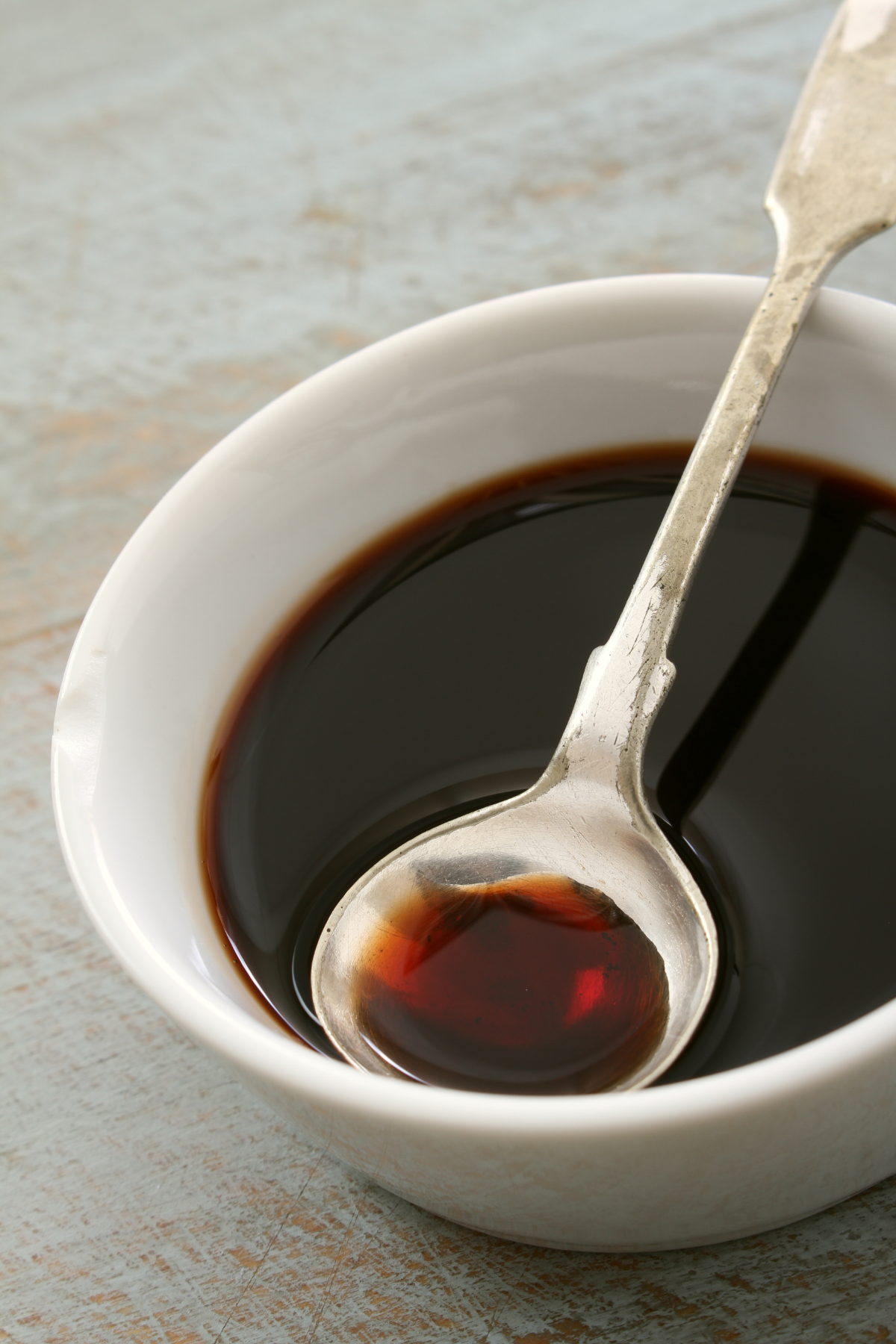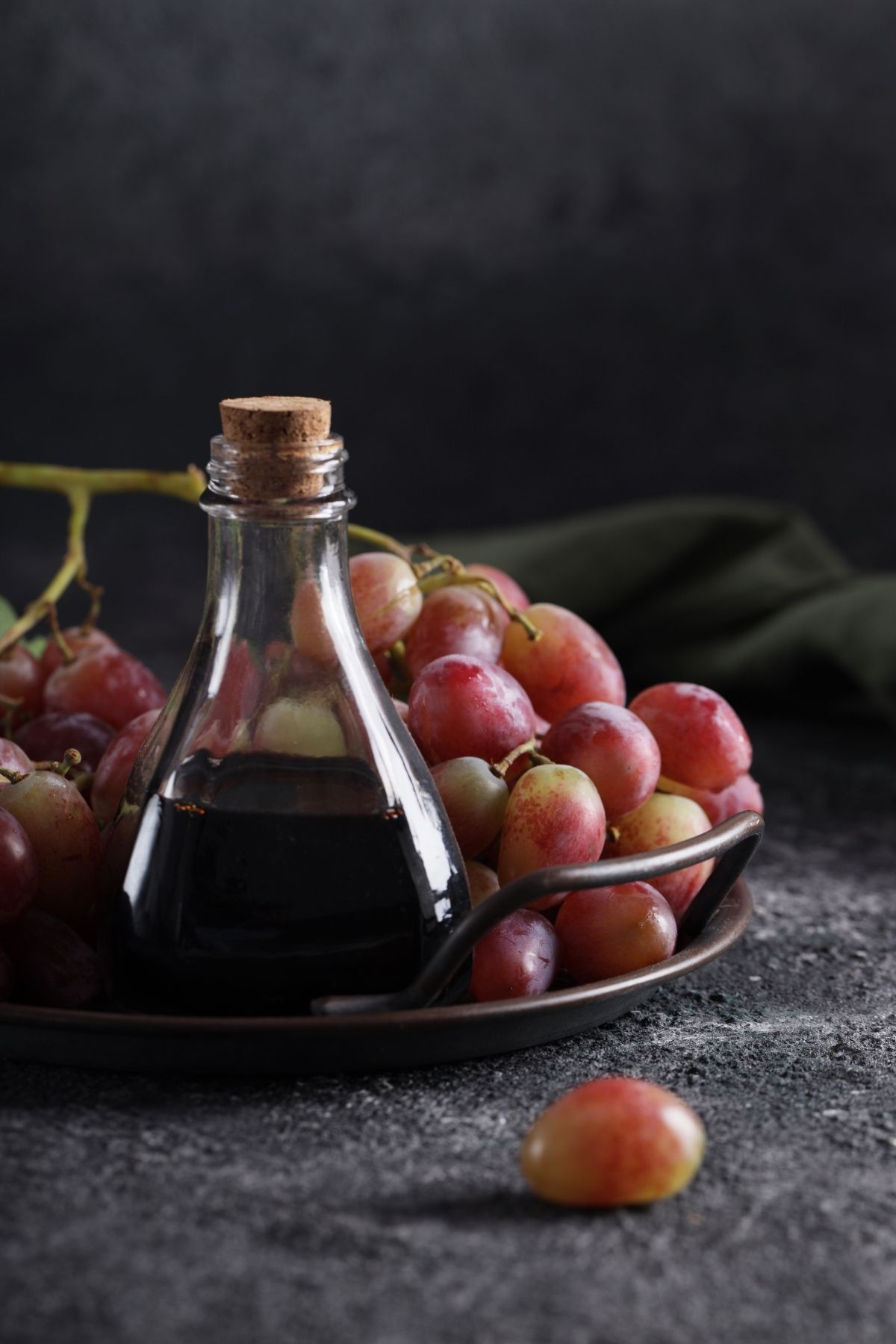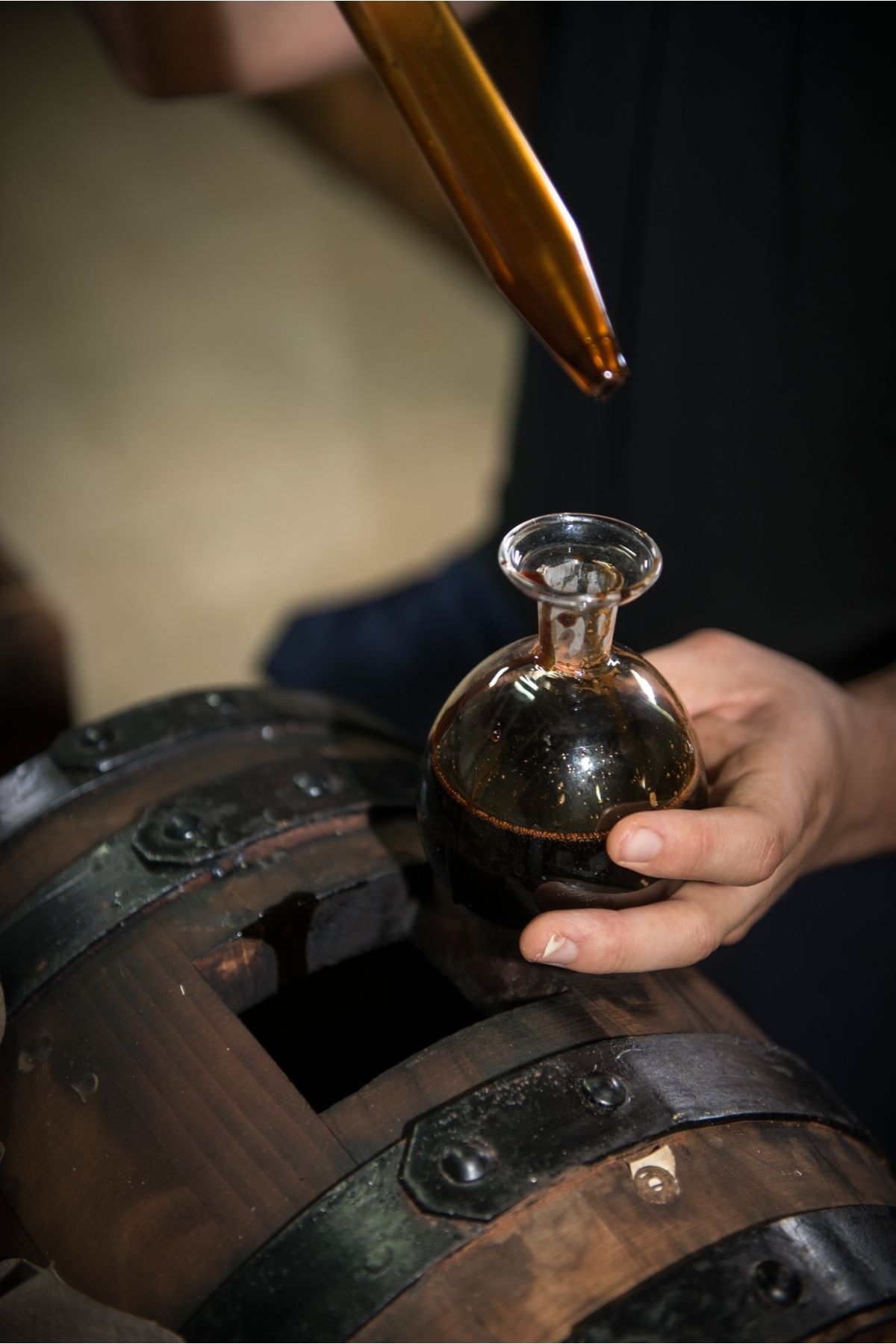What is Balsamic Vinegar?
What Italian town is known for producing balsamic vinegar? Modena and Reggio Emilia are the two places in Italy that make balsamic vinegar. Balsamic vinegar is a black, slightly sweet vinegar with a strong flavor that you can use to enhance salad dressings, marinades, and sauces.
You can reduce to a glaze and drizzle over strawberries, swirl into risotto, or toss with brussels sprouts or red onions in the oven to let the sugars caramelize.

How is Balsamic Vinegar Made?
How is balsamic vinegar made? All balsamic vinegar comes from a thousand-year-old technique developed in the Italian towns of Modena and Reggio Emilia. Traditional balsamic vinegar, also known as Aceto balsamico tradizionale, is made from grape must or freshly squeezed grape juice.
Traditional balsamic vinegar is entirely a product of grape must. It is required to farm the grapes in the Modena and Reggio Emilia districts to meet European Union criteria. This is mainly white Trebbiano and Lambrusco kinds.
The grapes get reduced in volume and concentrated in sugars by boiling it in large cauldrons outdoors over an open flame and then fermented and acidified in wooden barrels over time.
Traditional balsamic vinegar matures for at least 12 years in a series of smaller wooden barrels, each built from a different variety of wood, such as oak, juniper, mulberry, ash, cherry, and chestnut. As the vinegar ages in the barrels, it takes on the flavors of the wood and loses its acidity.
Because of the porous nature of the wood, the vinegar loses moisture over time and concentrates, finally attaining a syrupy consistency. Each season, bottle a portion of the vinegar from the smallest barrel, and the vinegar in that barrel you refill with vinegar from the next larger barrel, and so on up the barrel line.
Given the time and effort you require to manufacture traditional balsamic vinegar, it’s no surprise that output is limited, and costs are expensive.
What Italian Town is Known for Producing Balsamic Vinegar?
Traditional balsamic vinegar comes from only two places in Italy: Modena and Reggio Emilia. With stringent production and marketing guidelines, the European Union has granted Modena and Reggio Emilia specific DOP (Protected Designation of Origin) designations.
Bottles of vinegar from Modena have labels of 12 or 25 years. The vinegar can have a brand of 12, 18, or 25 years in Reggio Emilia. The size and style of the bottles vary; upside-down tulip-shaped for traditional Reggio Emilia balsamic vinegar and globed shaped with a rectangular bottom for Modena balsamic vinegar. These bottles, too, are all regulated.
Balsamic Vinegar Ingredients
Balsamic vinegar ingredients are specific because of receiving official recognition. The ingredients include:
- Boiled and condensed grape
- Wine vinegar
- For color, use natural caramel produced from cooking sugar.
- There is a minimal amount of aged balsamic vinegar (aged at least ten years).
- The grapes are from farms in the Emilio Romana area of Italy, and the vinegar must be made and bottled by licensed Modena manufacturers.
What is the purpose of caramel? Caramel (cooked sugar) is added to the vinegar, not as a sweetener, but to deepen it and make it look more like balsamic vinegar. The grape must contain plenty of sugar. Consider the caramel in the list of ingredients to be a natural coloring agent.

Balsamic Vinegar Types
You can make balsamic vinegar using a centuries-old Italian vinegar production method. There are three balsamic vinegar types:
Modenas Traditional Balsamic Vinegar and Reggio Emilia’s DOP Certification
This is the most exclusive and superior of all the options. You can reduce the amount of cooked grape to make the original “Aceto Balsamico Tradizionale.” You leave the liquor to age in a series of wooden barrels that get smaller as the substance thickens and gradually evaporates over time.
There is never anything added to the product. The vinegar, “affinato,” is appropriate for drinking after a minimum of 12 years. The vinegar is then judged and scored by five qualified master tasters. The consortium of traditional balsamic vinegar from Italy can bottle, seal, and individually number the vinegar if it meets a specified quality.
You can only use one bottle design, in this case, the distinctive 100 ml bottle designed by Giorgio Giugiaro for the Consortium of Traditional Balsamic Vinegar of Modena. The vinegar has the branding “Extra Vecchio” or “Extra Old” when its maturity happens in wooden barrels for at least 25 years.
This is when a fully formed, great-tasting traditional balsamic vinegar qualifies to be at its best. Of course, there are older forms of balsamic vinegar that have matured for many years. However, older does not always imply higher quality.
You can determine the overall quality of the final product, just like a great bottle of wine or whisky, by several elements. They include the quality of the grape and the oak barrels, the climate conditions in the maturing room, the ability of the producers, etc. As a result, aging is just one step in the process, and it does not guarantee a better product.
This is why the Consortium of Traditional Balsamic Vinegar in Modena uses only one bottle and two different color seals to distinguish the affinato (ivory/cream seal) from the Extra Vecchio (gold seal) and never prints the product’s age on the bottle.
Do not believe any bottles with aging claims or numbers on the labels, as these are most likely impostors attempting to mislead the public.
Modena Balsamic Vinegar with IGP Certification
The standards for this sort of balsamic vinegar are less stringent. Unlike traditional balsamic vinegar, the grapes must come from a specific geographical area, and you add nothing to the grape. The grapes for IGP products can come from anywhere globally, and they must age for at least two months in wooden barrels.
You can prepare with wine vinegar with some coloring, caramel, and thickeners thrown in for good measure. As a result, the quality of this vinegar isn’t always the best. As a general rule, avoid anything with more than boiled grape must and wine vinegar included in the components.
If the ingredients list a generic: balsamic vinegar, please return it because the manufacturer does not want you to know what’s inside. This is most definitely not a natural product, and it’s likely packed with additives and who knows what else you don’t want in your body. However, there is some excellent authentic IGP Modena balsamic vinegar out there.
The Balsamic Guy’s Condiment comes from a tiny acetaia in Modena and is aged for a minimum of 6 years in wooden barrels, according to the traditional balsamic vinegar method.
The critical difference is that this vinegar is younger and contains a tiny amount of wine vinegar to increase the acidity.
There are no established guidelines for these condiments’ labeling systems. However, the same rule distinguishes a good condiment from a badly commercialized one.
Balsamico from The Balsamic Guy is an all-natural product that is a fantastic substitute for superior flavor without the higher price tag of traditional balsamic vinegar.

Balsamic Vinegar From Italy
What is balsamic vinegar? You derive balsamic vinegar (vinagre balsamico) from unfermented grape juice and dark brown vinegar. It’s famous for its distinct, powerful, complex flavors as well as a tangy finish. Authentic balsamic vinegar is pricey because it ages in barrels for months or even years.
Balsamic vinegar is becoming increasingly popular in food preparations, particularly salad dressings and marinades. It is used as a low-fat addition and as part of a heart-healthy diet by many people. Some people feel balsamic vinegar is beneficial on its own. Balsamic vinegar is good for weight loss, lower cholesterol, and even more radiant skin.

Community of passionate writers and content creators who share a love for Italian heritage, culture, travel, food, and the Italian-American community. Our mission is to celebrate Italy’s rich history and traditions and connect with others who share the same passion.

